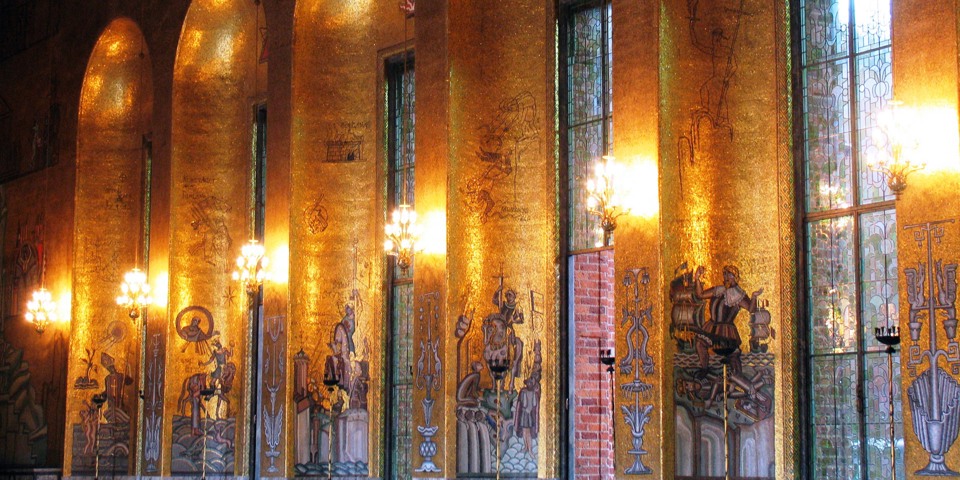The architectural style most commonly mentioned in connection to the City Hall are renaissance, the Swedish baroque, and the national romantic style.
Venetian inspiration
Ragnar Östberg was inspired by Italy, particularly Venice. The City Hall’s design, built around two courtyards, is similar to Italian renaissance palaces. At the City Hall, there is an outer courtyard and an inner courtyard. The Blue Hall is the inner courtyard and, while it does have a ceiling, it gives the impression of being open. The Venetian inspiration is also evident in the colonnade outside, towards the waterfront, which is similar to the colonnade at the Doge’s Palace, located by the square of San Marco in Venice.
Another example is the large marble staircase in the Blue Hall, which was probably inspired by the staircase la Scala dei Giganti at the Doge’s Palace. The column in the City Hall Park, with freedom fighter Engelbrekt Engelbrektsson at the top, was inspired by the column with the winged lion at the square of San Marco in Venice.
The national romantic style
A country's own history was extremely important for the national romantic style. Ragnar Östberg was inspired by several older buildings in Sweden; such as the Vasa castles that were built or modernised during the Swedish renaissance. Of these, Östberg was particularly inspired by the old royal castle Three Crowns (Tre Kronor), previously located in the Old Town in Stockholm before it burnt down in 1697. By using the same brick size and brickwork for the City Hall as the castle Three Crowns, Östberg gave the City Hall both historical significance an legitimacy.
The tower at the City Hall is another reference to the castle Three Crowns, which had one large tower with three crowns at the top but also towers featuring at crescent moon, star, and the sun. The three crowns at the top of the City Hall Tower faces the Royal Palace in Old Town, where the castle Three Crowns once stood.
With the national romantic style, it was important to use local building materials. Apart from a few exceptions, only Swedish materials were used for the construction of the City Hall. Local materials used at the City Hall include granite taken from the Stockholm archipelago and marble taken from Kolmården.
A mix between architecture and art
Ragnar Östberg believed that architecture and art go hand in hand, and that art should be a natural extension for architecture. All of the sculptures, paintings, and decorations at the City Hall serve as a reference to the history of Sweden and of Stockholm, and some of the greatest artists and artisans of the time designed the interior of the building.

